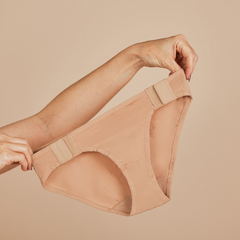
The lifespan of a bra can vary depending on a number of factors, such as the quality of the materials used, the frequency of wear, and the proper care and maintenance. It may also, unfortunately, be impacted by a woman’s chest size. As such, there is no one-size-fits-all answer.
As a general rule of thumb, women should replace their bras every 6 to 12 months. However, there are many different factors that will influence that number.
Bra Quality
One of the most important factors to consider when determining how often to buy new bras is the quality of the bra. A well-made, high-quality bra is likely to last longer than a cheap, poorly made one because there’s been more attention paid to the stitching, the components, and the fabric.
The stitching is less likely to come apart within the first few wears and it will better withstand the body’s movements. The component pieces – straps, hooks, and underwire – will also not break or bend very easily when under stress.
In terms of materials, it gets a little tricky. Bras made from synthetic fibers are often softer to the touch than traditional materials, such as cotton. That means that they’re preferred for their added comfort compared to other bras. The tricky part is that bras made from natural fibers like cotton or silk tend to be more durable and breathable, which can prolong their lifespan.
Synthetic fabrics like polyester and nylon, can be less durable and more prone to stretching and losing shape over time depending on the ratio of nylon to elastane (also known as Lycra or Spandex). The higher the amount of nylon, the less stretchy, so the more durable it will be.
High-quality bras will generally need to be replaced less frequently than their lower quality counterparts. As such, from a financial standpoint, it’s a good investment if you can afford it. It will in the long term mean that you have to buy new bras less often.
Care & Maintenance
Washing and drying bras in a machine can also cause them to deteriorate more quickly. It’s best to wash bras by hand, but we know that’s not always possible especially if you have arthritis, a limb difference, or have had a stroke. We’ve developed a guide on the different ways to take care of your bras, no matter your ability.
Wear Frequency
If a bra is worn every day, it will naturally wear out faster than one that is only worn occasionally. Women who are active or have larger breasts may also find that their bras wear out more quickly, as the bra construction is more frequently working with movement and against gravity.
Body Changes
A woman’s body and chest size changes constantly over their lifetime. It can be at any point and for any number of reasons: pregnancy, menopause, emotional distress, disability, medication. That’s why it’s important to get measured when your normal bra is no longer fitting correctly to get maximum comfort and support. An indication of a poorly fitting bra is if it’s too tight or too loose around the band, if it causes discomfort, or if there’s a gap between the breast and cup or a spillage of breasts around the cup edge.
Wear & Tear
In addition to these general guidelines, it is also important to pay attention to the wear and tear of individual bras. If the straps are stretched out, the underwire is poking through, or there are any holes or tears, it is likely time to replace that specific bra.
So, What To Do With Old Bras?
Armed with this information, you’ll be able to make an informed decision about whether it’s time for you to replace your bras. If you decide based on your personal circumstance that it is, it can be confusing to figure out what to do with your old bras. We’ve created a handy guide to point you in the direction of organizations that recycle bras and another one to understand whether you can donate them to Goodwill.



